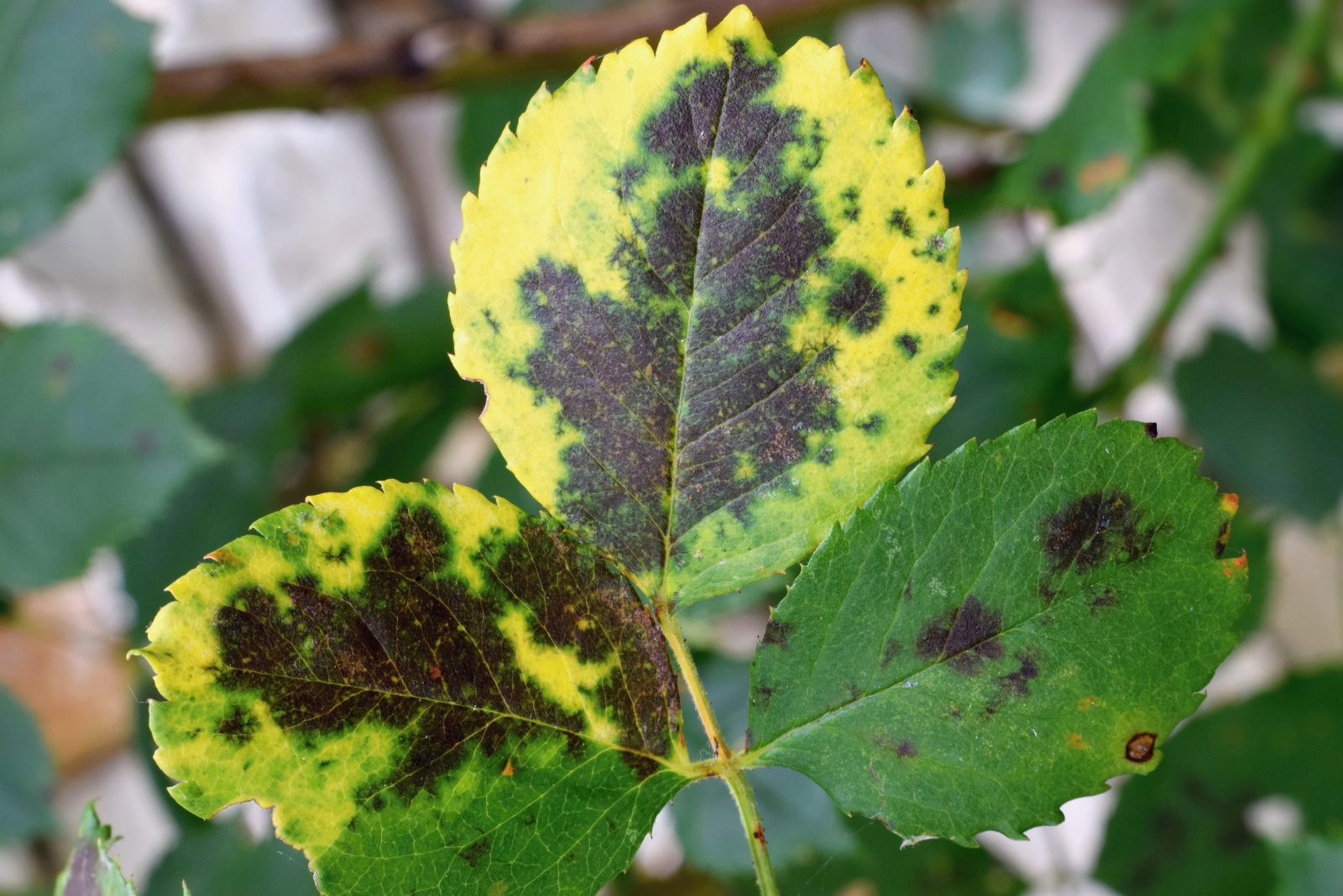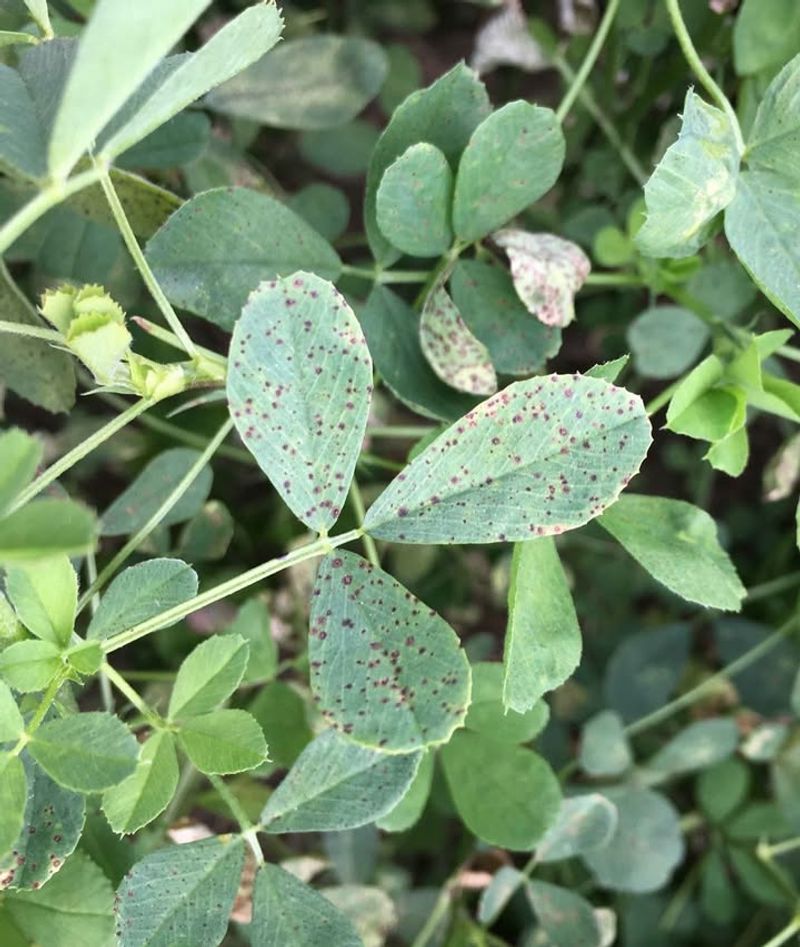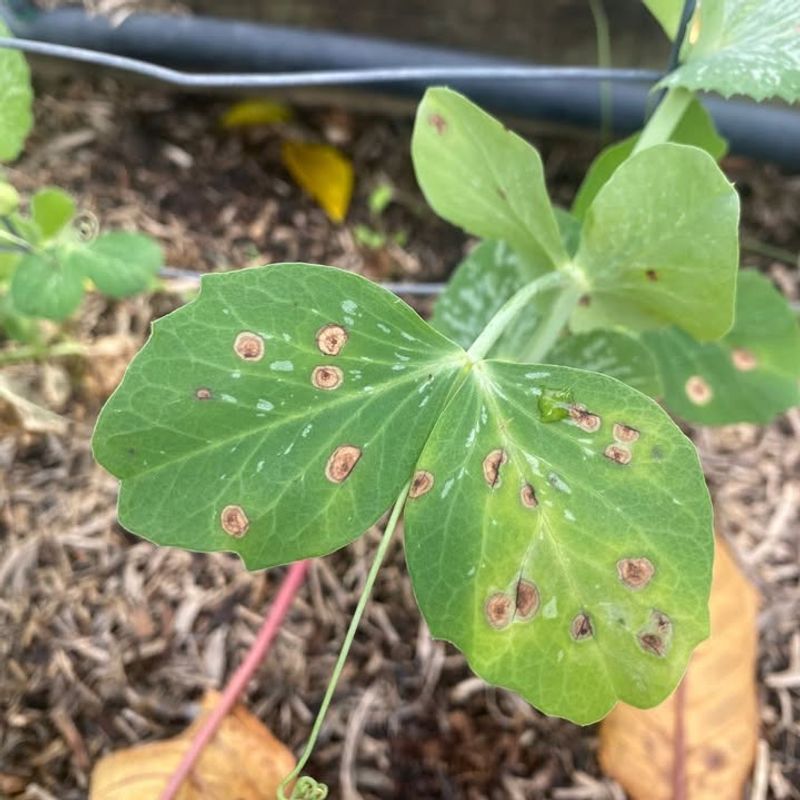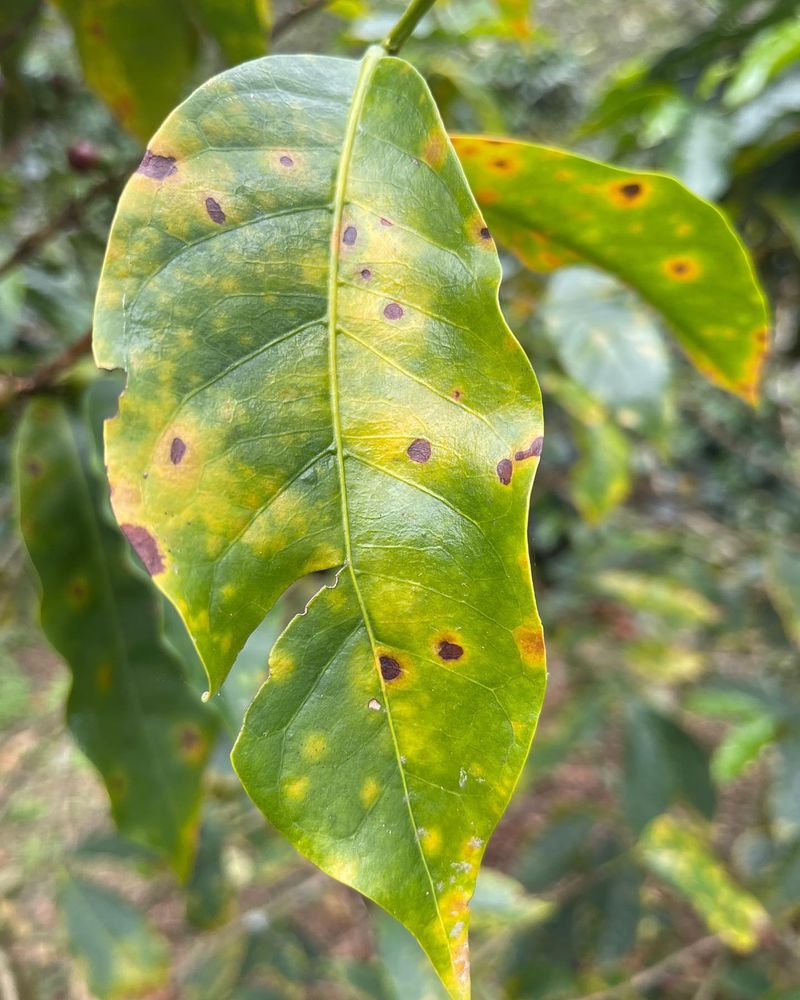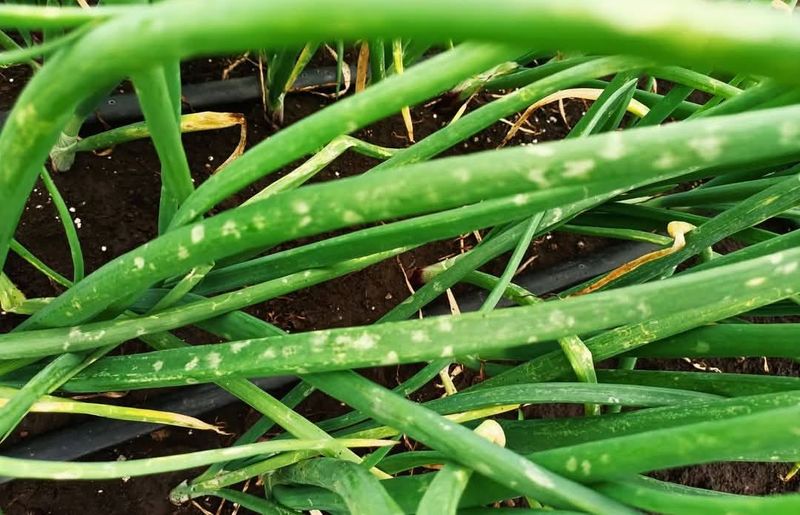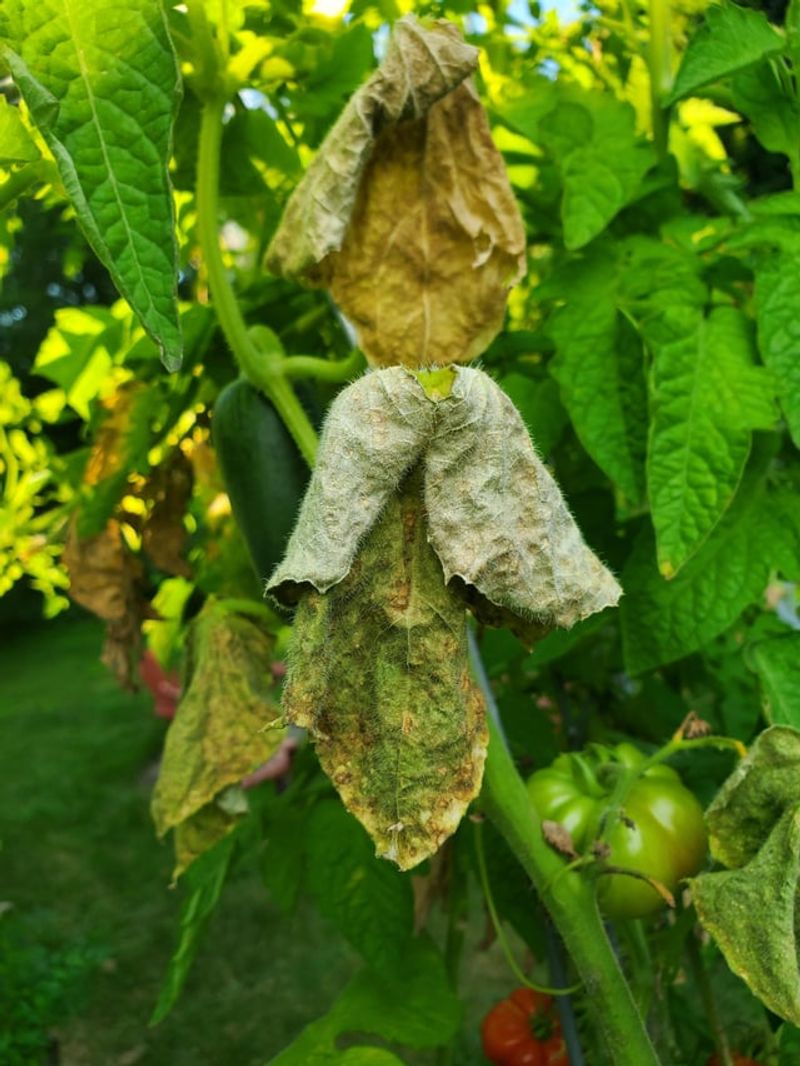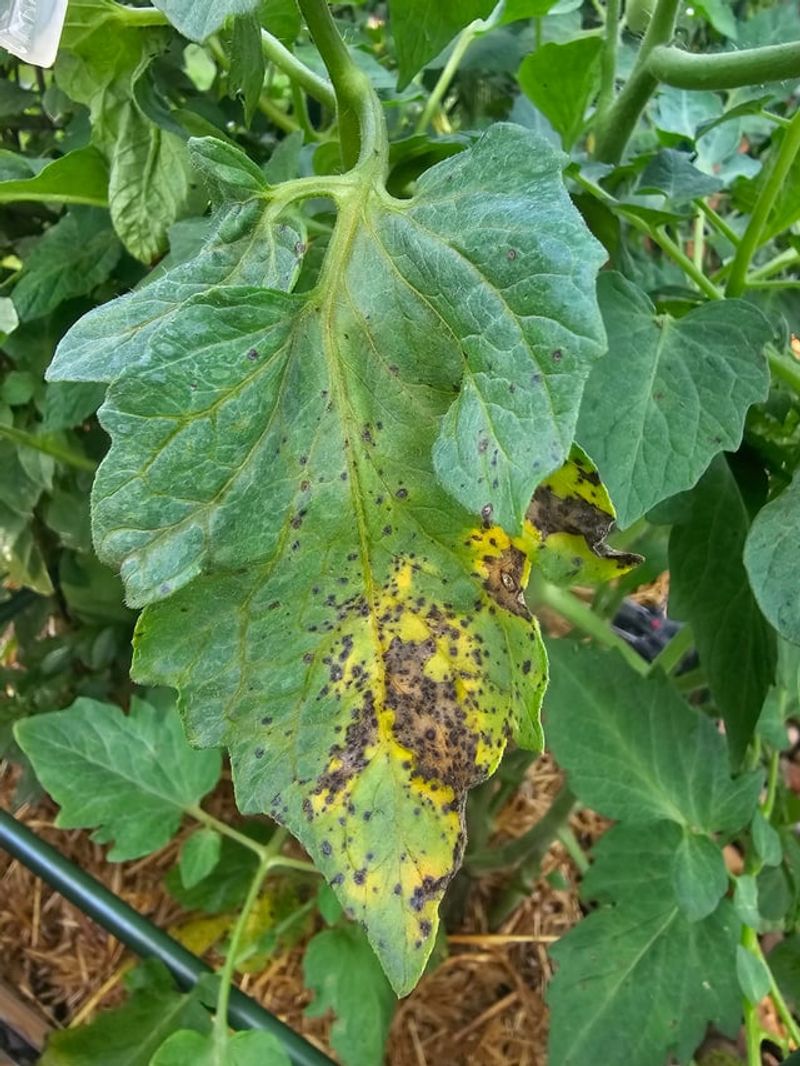After all that rain, something strange has been popping up on plants across Illinois, and it’s catching gardeners off guard.
Sudden leaf spot breakouts are showing up almost overnight like tiny freckles spreading faster than anyone expects.
You might glance at a leaf and wonder how it went from healthy to blotchy in just a day.
It’s the kind of surprise that makes you stop mid-yard walk and think, okay… what is going on out here?
1. Excessive Moisture Creates Perfect Fungal Conditions
Heavy rainfall in Illinois has left plant leaves wet for days, creating an ideal environment where fungal spores can germinate and spread rapidly across garden beds.
Fungi thrive when moisture sits on leaf surfaces for extended periods, allowing tiny spores to take root and multiply at alarming speeds throughout residential landscapes.
Gardeners across the state notice these spots appearing within just a few days after major storms pass through their neighborhoods and communities.
2. Warm Temperatures Speed Up Disease Development
Spring and summer warmth combined with recent rains has accelerated fungal growth rates, making leaf spot diseases develop much faster than during cooler weather periods.
Temperature ranges between sixty and eighty degrees Fahrenheit are perfect for most leaf spot fungi, and Illinois has experienced exactly these conditions recently across regions.
Plant owners notice that infections spread from one leaf to entire branches within a week when warm, humid weather persists throughout the state.
3. Poor Air Circulation Traps Humidity Around Plants
Crowded gardens where plants grow too close together prevent air from flowing freely, trapping moisture around foliage and creating humid pockets where fungi flourish easily.
Many Illinois gardeners pack their beds tightly to maximize space, but this practice unfortunately allows leaf spot diseases to jump quickly from one plant to another.
Proper spacing between plants helps leaves dry faster after rain, reducing the time fungi have to infect healthy tissue in your outdoor growing areas.
4. Overhead Watering Spreads Fungal Spores Rapidly
Watering from above splashes water and fungal spores from infected leaves onto healthy ones, spreading the disease much faster than most Illinois gardeners realize happens.
Drip irrigation or soaker hoses deliver water directly to soil, keeping foliage dry and preventing spores from moving around your garden beds as effectively as possible.
Switching your watering method can dramatically reduce leaf spot problems, especially during wet seasons when conditions already favor fungal growth across the entire state.
5. Weakened Plants Become Easy Targets for Infection
Plants already stressed by poor nutrition, drought, or pest damage cannot defend themselves effectively against fungal attacks, making them vulnerable to rapid leaf spot infections.
Illinois gardens that lack proper fertilization or have compacted soil often see worse outbreaks because weakened plants simply cannot mount strong defenses against invading pathogens.
Healthy, well-fed plants resist diseases better, so maintaining good soil health and nutrition helps your garden fight off these troublesome fungal problems more successfully.
6. Infected Plant Debris Harbors Overwintering Spores
Old leaves and stems left on the ground from previous seasons carry dormant fungal spores that wake up when spring rains arrive in Illinois neighborhoods.
Cleaning up fallen foliage and removing infected plant material prevents these spores from splashing back onto new growth when heavy rainstorms hit your garden areas.
Regular garden sanitation practices significantly reduce leaf spot outbreaks by eliminating the hiding places where fungi survive cold winters and wait for favorable growing conditions.
7. Rapid Disease Spread Through Splashing Water Droplets
Raindrops hitting infected leaves create tiny explosions that launch thousands of microscopic fungal spores into the air, landing on nearby healthy plants throughout Illinois gardens.
This splashing action is incredibly efficient at spreading disease, which explains why leaf spot outbreaks seem to appear everywhere simultaneously after major rain events.
Mulching around plants helps reduce splash-up from soil, providing a protective barrier that keeps spores from bouncing back onto lower leaves during heavy downpours.
8. Dense Foliage Stays Wet Longer After Storms
Plants with thick, overlapping leaves trap water in their canopies for hours or even days after Illinois rainstorms end, giving fungi plenty of time to infect.
Pruning plants to open up their centers allows better light penetration and airflow, helping foliage dry more quickly and reducing the window for fungal infection.
Thinning out dense growth may seem counterintuitive, but it actually promotes healthier plants by preventing the prolonged wetness that leaf spot diseases absolutely require to spread.

